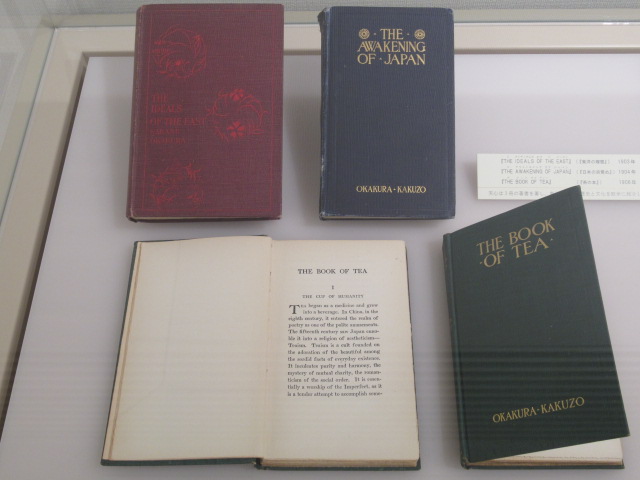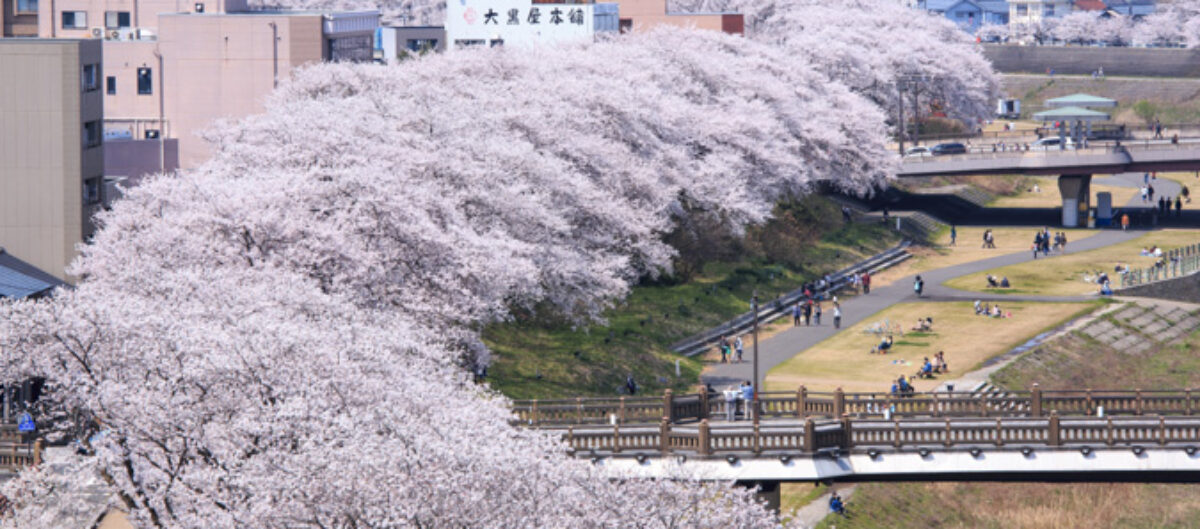






January/26/2019
In 2013, Okakura Tenshin’s 150th birthday anniversary exhibition was held at Fukui Prefectural Museum of Fine Arts. I went there and saw the first edition of The Book of Tea and artworks by his students, like Yokoyama Taikan.

Tenshin was born in Yokohama, Japan, in 1863. Since his father was born in Fukui, Tenshin always said that his own hometown was Fukui. He’d studied English since the age of 8, and he’d also studied the Chinese classics, like the Analects of Confucius, since the age of 10. He went to the University of Tokyo and studied politics, economics, philosophy, English literature, Japanese literature, and Chinese classical literature.
While he was a university student, Tenshin had his most important encounter. He met Ernest Fenollosa, who was born in America and taught philosophy at the university. Since Tenshin was good at speaking English, he acted as an interpreter for Fenollosa. Fenollosa was fascinated by old Japanese works of art and collected ancient Japanese paintings in his free time.
At that time, Japan was influenced by Western culture, and Japanese art and culture were in great danger. Tenshin and Fenollosa carried out research on temples and shrines in order to protect Japanese culture.
It’s said that Tenshin laid the foundations of Japanese modern art. He founded the predecessor to Tokyo University of the Arts(one of the most prestigious art schools in Japan) and also established The Japan Art Institute. In addition, he started an art magazine called Kokka(國華). (Kokka is a monthly art magazine that has continued from 1889 to the present. It’s highly praised in both Japan and around the world.) He was also a curator of the Department of Chinese and Japanese Art at the Museum of Fine Arts, Boston, which is one of the largest art museums in the United States.
Tenshin wrote some books in English. Among them, The Book of Tea is the most well known. In this book, he wrote, “It (drinking tea) is the only Asian custom that commands universal esteem. The white man has scoffed at our religions and our morals but has accepted the brown beverage without hesitation.”
It’s said that the habit of drinking tea started in China. Then it spread to Europe in the 17th century. In Alice’s Adventures in Wonderland, there’s a scene that centers on a tea party. Like this, the culture of tea became important in Western countries.
In my opinion, he wanted to introduce Eastern and Japanese culture to the West through tea, hoping for world peace.
Tenshin made few artworks. However, he drew a picture called Japanese Modern Art on a canvas. He was a real artist.
↑↑ This is Central Park, and you can see the statue of Tenshi here.
(References)
「ふるさと福井の先人100人」(福井県教育委員会)
「岡倉天心(人物叢書)」(斎藤隆三)(吉川弘文館)
「岡倉天心の生涯(澤村龍馬)」(フェニックス出版)
「お茶の大研究」(監修 大森正司) (PHP研究所)
「The Book of Tea」 (Okakura Tenshin)

Do you know the Japanese Garden, Tenshin-en in the Museum of Fine Arts in Boston. I have been there 4 years ago. Please visit the website of the Boston Museum.
Thank you for the information about Museum of Fine Arts, Boston. I didn’t know about Tenshin-en.
I visited the website of the Boston Museum. I didn’t know that the Boston Museum is so big.